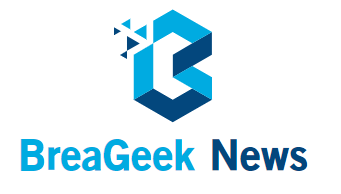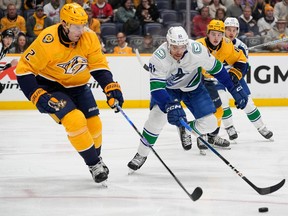L’exercice peut améliorer directement la santé du cerveau en favorisant le développement des neurones dans l’hippocampe, les astrocytes jouant un rôle majeur dans la médiation des effets. Cette recherche pourrait mener à des thérapies basées sur l’exercice pour les troubles cognitifs tels que la maladie d’Alzheimer.
L’étude des signaux chimiques générés par la contraction des cellules musculaires indique des moyens d’améliorer la santé du cerveau par l’exercice.
Les chercheurs de Beckman ont étudié comment les signaux chimiques des muscles en contraction favorisent la santé du cerveau. Leurs découvertes révèlent comment ces signaux aident au développement et à la régulation de nouveaux réseaux cérébraux tout en indiquant des moyens d’améliorer la santé du cerveau grâce à l’exercice.
L’activité physique est souvent citée comme un moyen d’améliorer la santé physique et mentale. Des chercheurs du Beckman Institute for Advanced Science and Technology ont montré que cela pouvait également améliorer plus directement la santé du cerveau. Ils ont étudié comment les signaux chimiques de l’exercice musculaire favorisent la croissance des neurones dans le cerveau.
Leurs travaux ont été publiés dans la revue Neurologie.
Lorsque les muscles se contractent pendant l’exercice, comme les biceps d’un poids lourd, ils libèrent une variété de composés dans la circulation sanguine. Ces composés peuvent se déplacer vers différentes parties du corps, y compris le cerveau. Les chercheurs étaient particulièrement intéressés par la façon dont l’exercice pourrait bénéficier à une partie spécifique du cerveau appelée l’hippocampe.
« L’hippocampe est une région importante pour l’apprentissage et la mémoire, et donc pour la santé cognitive », a déclaré Ki Yun Lee, Ph.D. étudiant en sciences mécaniques et en génie à l’Université de l’Illinois, Urbana-Champaign, et auteur principal de l’étude. Ainsi, comprendre comment l’exercice profite à l’hippocampe pourrait conduire à des thérapies basées sur l’exercice pour une variété de conditions, y compris[{ » attribute= » »>Alzheimer’s disease.

Hippocampal neurons (yellow) surrounded by astrocytes (green) in a cell culture from the study. Image provided by the authors. Credit: Image provided by the study authors: Taher Saif, Justin Rhodes, and Ki Yun Lee
To isolate the chemicals released by contracting muscles and test them on hippocampal neurons, the researchers collected small muscle cell samples from mice and grew them in cell culture dishes in the lab. When the muscle cells matured, they began to contract on their own, releasing their chemical signals into the cell culture.
The research team added the culture, which now contained the chemical signals from the mature muscle cells, to another culture containing hippocampal neurons and other support cells known as astrocytes. Using several measures, including immunofluorescent and calcium imaging to track cell growth and multi-electrode arrays to record neuronal electrical activity, they examined how exposure to these chemical signals affected the hippocampal cells.
The results were striking. Exposure to the chemical signals from contracting muscle cells caused hippocampal neurons to generate larger and more frequent electrical signals — a sign of robust growth and health. Within a few days, the neurons started firing these electrical signals more synchronously, suggesting that the neurons were forming a more mature network together and mimicking the organization of neurons in the brain.
However, the researchers still had questions about how these chemical signals led to growth and development of hippocampal neurons. To uncover more of the pathway linking exercise to better brain health, they next focused on the role of astrocytes in mediating this relationship.
“Astrocytes are the first responders in the brain before the compounds from muscles reach the neurons,” Lee said. Perhaps, then, they played a role in helping neurons respond to these signals.
The researchers found that removing astrocytes from the cell cultures caused the neurons to fire even more electrical signals, suggesting that without the astrocytes, the neurons continued to grow — perhaps to a point where they might become unmanageable.
“Astrocytes play a critical role in mediating the effects of exercise,” Lee said. “By regulating neuronal activity and preventing hyperexcitability of neurons, astrocytes contribute to the balance necessary for optimal brain function.”
Understanding the chemical pathway between muscle contraction and the growth and regulation of hippocampal neurons is just the first step in understanding how exercise helps improve brain health.
“Ultimately, our research may contribute to the development of more effective exercise regimens for cognitive disorders such as Alzheimer’s disease,” Lee said.
Reference: “Astrocyte-mediated Transduction of Muscle Fiber Contractions Synchronizes Hippocampal Neuronal Network Development” by Ki Yun Lee, Justin S. Rhodes and M. Taher A. Saif, 2 February 2023, Neuroscience.
DOI: 10.1016/j.neuroscience.2023.01.028
In addition to Lee, the team also included Beckman faculty members Justin Rhodes, a professor of psychology; and Taher Saif, a professor of mechanical science and engineering and bioengineering.
Funding: NIH/National Institutes of Health, National Science Foundation

« Évangéliste généraliste de la bière. Pionnier du café depuis toujours. Défenseur certifié de Twitter. Internetaholic. Praticien du voyage. »







More Stories
rapide! Que quelqu'un récupère ce livre de médecin.
« L'IA m'aide à faire du vin pour les jeunes buveurs »
Mises à jour en direct du lancement de Starlink Falcon 9 au Cap